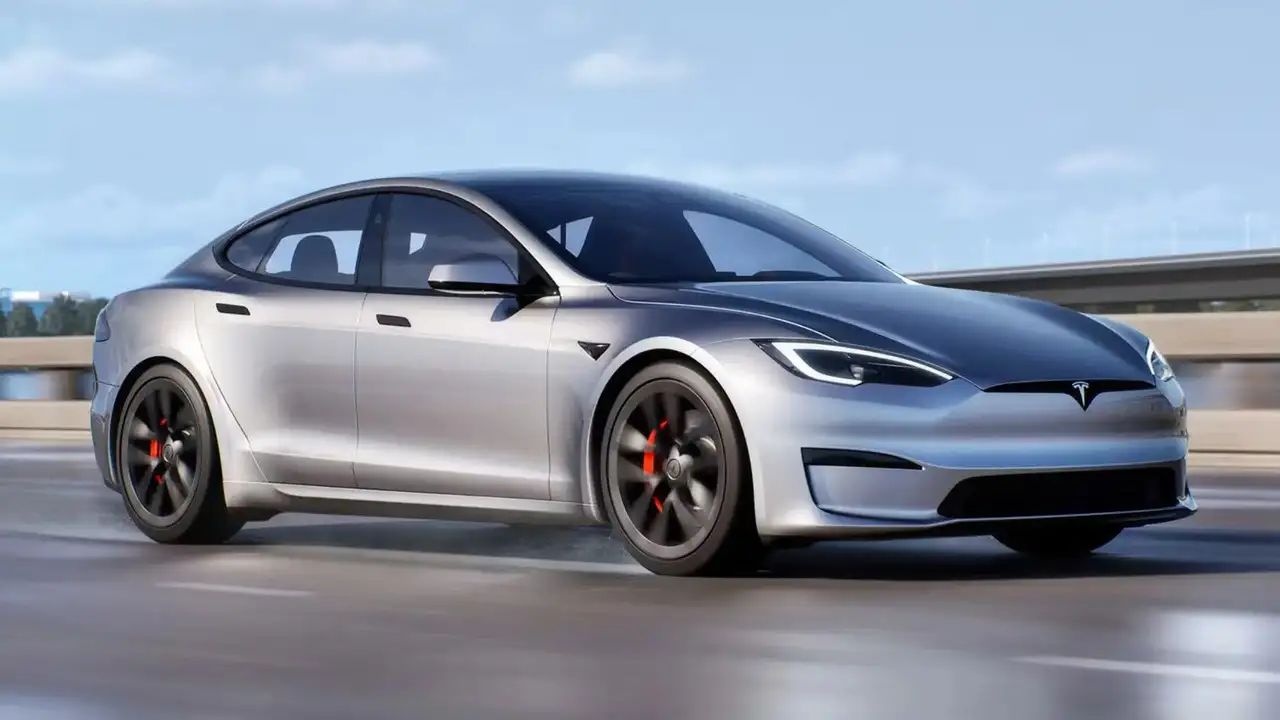
In today’s fast-paced world, finding smart ways to save a few bucks is always a win, and for car owners, that often means looking for ways to trim fuel costs. It’s no surprise, then, that electric vehicles (EVs) have zoomed into the spotlight, promising a future of savings at the pump and reduced maintenance headaches. With many models also packing in the latest premium safety technologies, the appeal of going electric is definitely powerful. It’s easy to see why so many consumers are considering making the switch.
But here’s the thing about cutting-edge tech and exciting new trends: not every shining star lives up to its hype. While the EV market is buzzing with innovation, it’s also a bit of a minefield, with some models simply not delivering on their promises. From electric cars that barely make it down the road on a full charge to those plagued by persistent reliability woes, it turns out that not all electric vehicles are truly worth your hard-earned cash or your precious time. It’s a harsh reality that can leave even the most enthusiastic early adopters feeling, well, a little deflated.
So, before you plug into the nearest dealership and drive off into what you hope is a greener, more economical sunset, it’s crucial to know which models might just bring more sorrow than savings. We’ve sifted through professional car reviews and countless owner complaints to bring you the lowdown on a dozen electric vehicles that shoppers should seriously consider steering clear of. Get ready to dive into the nitty-gritty of why some drivers are already wishing they could hit the rewind button on these particular EV purchases.
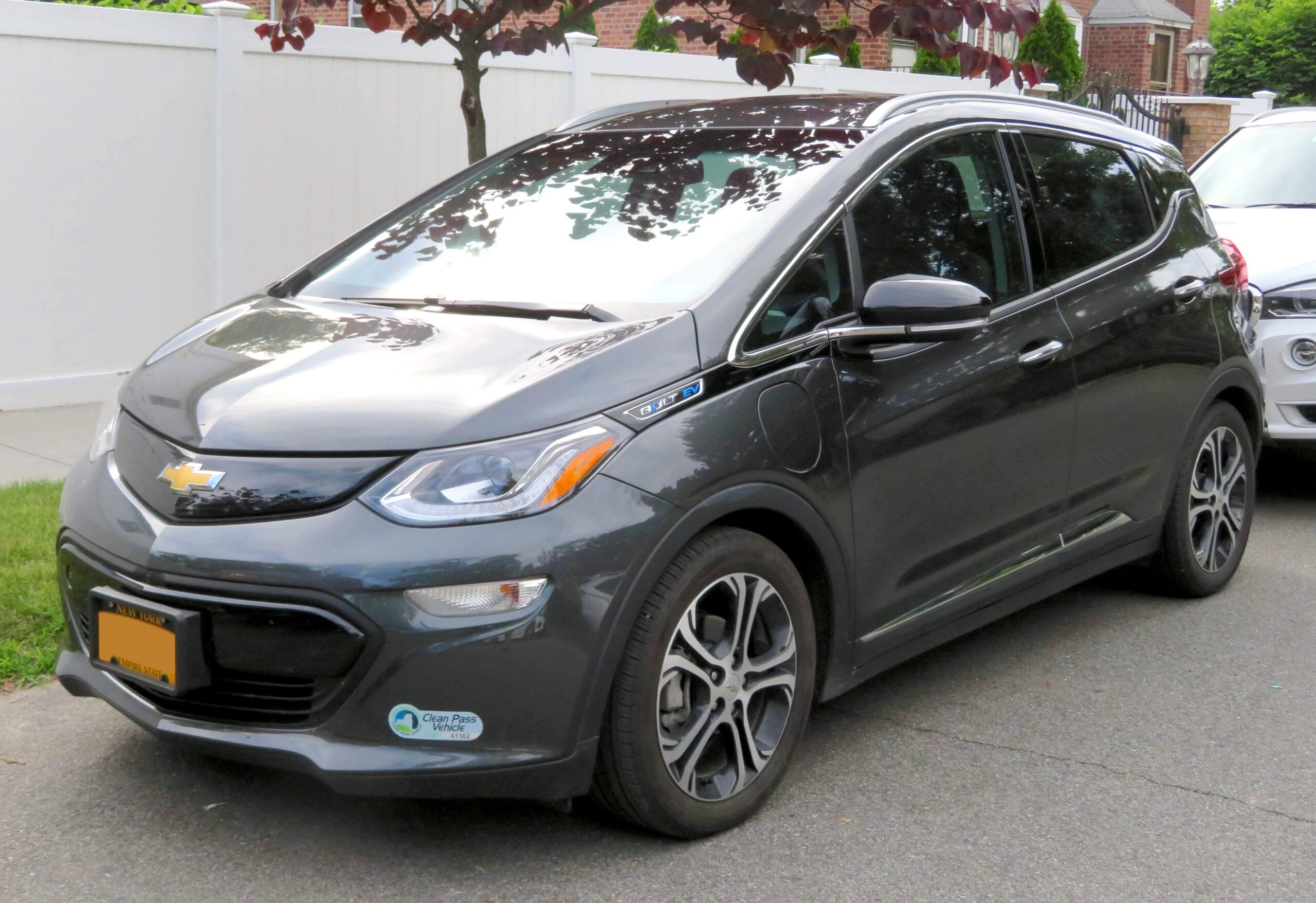
1. **Chevrolet Bolt EV**Ah, the Chevrolet Bolt EV. It once represented an affordable entry point into the electric world, but its journey has been a bit of a bumpy ride, culminating in its discontinuation after the 2023 model year. While on paper, the 2019 Chevrolet Bolt’s 238 miles of EPA-rated range on a full charge might have seemed appealing compared to many similarly priced rivals, that positive quickly gets overshadowed by a host of glaring issues that have left owners and reviewers alike scratching their heads.
Reviewers frequently took issue with several practical aspects of the Chevy Bolt. For starters, its “diminutive cargo capacity” made it less appealing for those needing more space. The ride quality also came under fire, with many finding it an “uncomfortable ride on uneven roads.” Adding to the list of frustrations was its “slow charging capacity,” a significant drawback in a world where speed is key for EV adoption. These initial criticisms painted a picture of a vehicle that, despite its electric promise, struggled with fundamental user experience.
But the real headaches, according to owners, began with reliability. Many found this tiny electric car to be “unreliable,” citing everything from “malfunctioning technology to problems with the propulsion system.” The frustration didn’t stop there; trying to get these recurring issues fixed often turned into an “overwhelming hassle,” adding insult to injury for drivers who had invested in what they hoped would be a dependable daily driver. These persistent mechanical and software glitches truly tested the patience of Bolt owners.
Even the basic act of charging proved problematic for some. Owners reported having “difficulty charging their Bolts at their home charging stations and some public chargers.” And when they *could* get the Bolts to charge, a new issue arose: “sometimes they can’t get the EVs to accept a full charge.” Beyond charging, in-car electronics were another sore point, with complaints about “faulty in-car electronics like display screens that freeze or go blank,” further diminishing the user experience and the vehicle’s overall perceived quality.
Car Model Information: 2020 Lexus RX 350 Base
Name: Chevrolet Bolt EV
Caption: 2022 Chevrolet Bolt EV
Manufacturer: General Motors
Production: unbulleted list
ModelYears: unbulleted list
Class: unbulleted list
BodyStyle: unbulleted list
Layout: Front-engine, front-wheel-drive layout
Predecessor: Chevrolet Spark EV
Categories: 2020s cars, All Wikipedia articles in need of updating, All articles containing potentially dated statements, All articles to be merged, All articles with unsourced statements
Summary: The Chevrolet Bolt EV (marketed in Europe as Opel Ampera-e) is a battery electric subcompact hatchback manufactured and marketed by General Motors under its Chevrolet brand from late 2016 until late 2023, with a brief hiatus between mid-2021 and early 2022.
The first-generation Bolt was developed and manufactured with LG Corporation. Sales of the 2017 Bolt began in California in December 2016; it was released nationwide and international markets release in 2017. A rebadged European variant was marketed as the Opel Ampera-e in mainland Europe. In 2017, the Bolt was the second-best-selling plug-in car in the United States. It was named the 2017 Motor Trend Car of the Year, the 2017 North American Car of the Year, an Automobile magazine 2017 All Star, and was listed in Time magazine’s Best 25 Inventions of 2016. The Ampera-e was discontinued after 2018. By the end of 2020, GM had sold 112,000 Bolt and Ampera-e cars worldwide. The first-generation Bolt had been subject to at least three recalls due to battery fire risks.
In mid-2023, GM officials said they would discontinue the Bolt; after outcry, they announced plans for a next-generation model. The second-generation Bolt, based on the Chevrolet Bolt EUV, was unveiled on October 9, 2025 for model year 2027.
Get more information about: Chevrolet Bolt
Buying a high-performing used car >>>
Brand: Chevrolet Model: Bolt EV
Price: $30,981 Mileage: 81,179 mi.
Read more about: Beyond the Beta Label: Unpacking the Genuine Confusion and Critical Failures in Automotive Software-Defined Vehicles
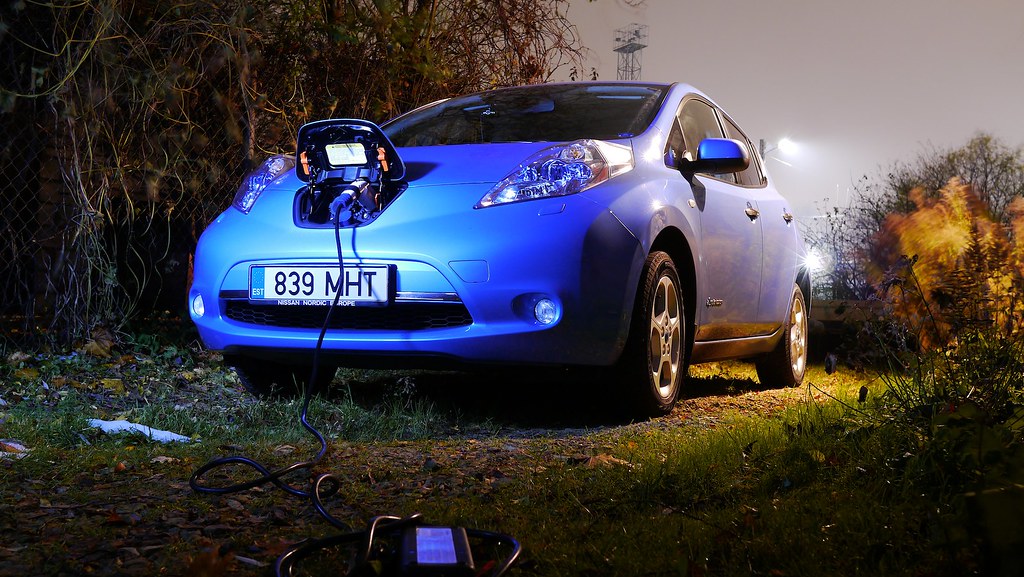
2. **Nissan Leaf**The Nissan Leaf holds a special place in EV history as one of the pioneers, but like many early trailblazers, its once-revolutionary technology is now decidedly showing its age. While it helped pave the way for electric mobility, its older electric motor and battery pack simply don’t stack up against the competition in today’s rapidly evolving EV landscape, leaving many drivers feeling like they’re stuck in the past rather than driving the future.
One of the most persistent criticisms leveled against the Nissan Leaf is its “poor driving range compared to its rivals,” a fundamental flaw for any electric vehicle. But the woes don’t end there. Reviewers also took issue with its fast-charging port, which can be “hard to find on the road, as it isn’t widely supported.” This problem is compounded by the fact that the Leaf “still uses the outdated CHAdeMO charging port, which is being phased out from many charging stations nationwide,” making road trips and even daily charging a potential logistical nightmare for owners.
Beyond range and charging, owner complaints highlight a broader lack of refinement. Many found this electric car to be “unreliable,” with some expressing dissatisfaction with an “unsatisfying infotainment system that did not support Apple CarPlay.” This “boring infotainment station” and “mediocre driving range” collectively contribute to an ownership experience that falls short of expectations, especially when compared to more modern and feature-rich EVs on the market.
For those considering dipping their toes into the used EV market, the early models of the Nissan Leaf, such as the 2011 version, come with their own set of warnings. While the average retail price for a used 2011 Nissan Leaf is between $3,000 and $3,035, making it seem like an affordable “grocery-getter,” its “range and storage are severely lacking.” With an “EPA-estimated 73 miles” of range, it frankly sounds like a “tough buy” even for a second car, proving that a low price doesn’t always equate to good value when basic functionality is compromised.
Car Model Information: 2024 Nissan Leaf SV PLUS
Name: Nissan Leaf
Caption: Third generation Nissan Leaf
Manufacturer: Nissan
Production: October 2010 – present
ModelYears: 2011–present
Class: Unbulleted list
BodyStyle: Unbulleted list
Layout: Front-engine, front-wheel-drive layout
Predecessor: Unbulleted list
Categories: 2020s cars, All articles containing potentially dated statements, All articles with dead external links, Articles containing Japanese-language text, Articles containing potentially dated statements from December 2015
Summary: The Nissan Leaf (Japanese: 日産・リーフ, Hepburn: Nissan Rīfu; stylized as LEAF) is a battery-electric car manufactured by Nissan, produced since 2010. It was offered exclusively as a 5-door hatchback which since then has become a crossover SUV model. The term “LEAF” serves as a backronym to leading environmentally-friendly affordable family car.
The Leaf was unveiled on 1 August 2009 as the world’s first mass market electric and zero-emission vehicle. Among other awards and recognition, it received the 2010 Green Car Vision Award, the 2011 European Car of the Year, the 2011 World Car of the Year, and the 2011–2012 Car of the Year Japan. The Leaf’s range on a full charge has been steadily increased from 117 km (73 miles) to 364 km (226 miles) (EPA rated) by the use of larger battery packs and several minor improvements.
As of September 2021, European sales totalled more than 208,000, and as of December 2021, over 165,000 had been sold in the U.S., and 157,000 in Japan. Global sales across both generations totalled 577,000 by February 2022. The Leaf was the world’s all-time top selling plug-in electric car until it was surpassed in early 2020 by the Tesla Model 3.
Get more information about: Nissan Leaf
Buying a high-performing used car >>>
Brand: Nissan Model: Leaf
Price: $19,888 Mileage: 15,933 mi.
Read more about: Buyer Beware: These 10 Popular Cars Are Known Money Pits After 100,000 Miles, According to Automotive Experts
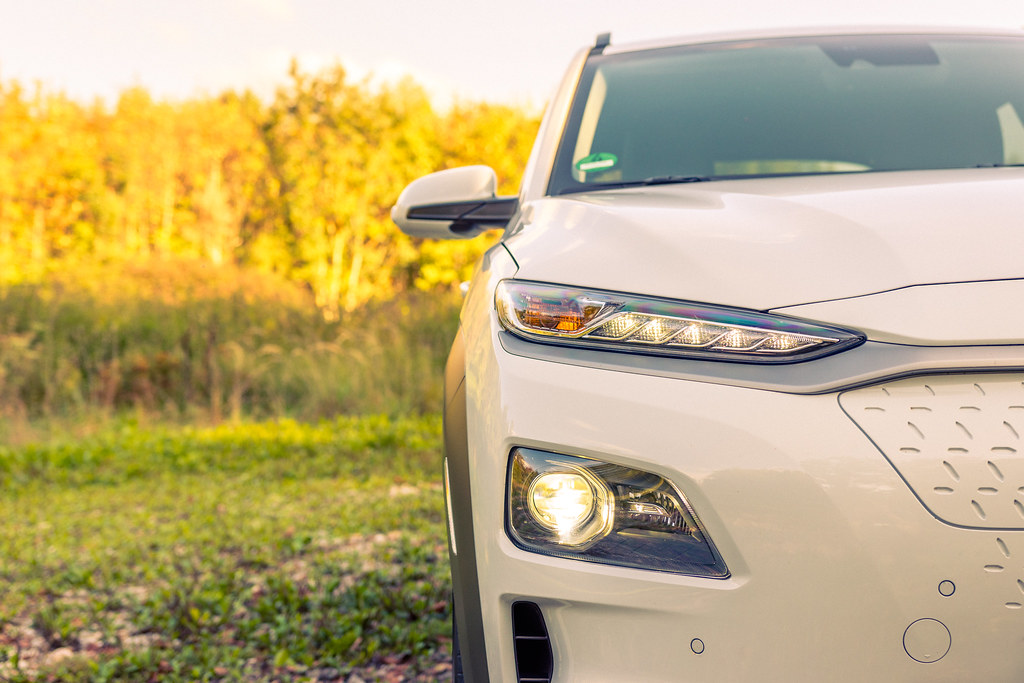
3. **Hyundai Kona Electric**Harkening back to Hyundai’s reputation for excellent manufacturing and high reliability, the Kona Electric, unfortunately, serves as a bit of a curveball. While the brand is generally lauded for producing dependable vehicles, the Kona Electric isn’t exactly a prime example of this stellar track record. Its entry into the electric segment, despite some positive aspects, has been consistently marred by a few critical shortcomings that have left a number of owners wishing they had chosen a different path.
From a performance standpoint, the Hyundai Kona Electric has struggled to impress. According to some professional reviewers, this EV “accelerates at a snail’s pace, and its charging speeds are not much faster.” For electric vehicle shoppers, particularly those who suffer from the ever-present anxiety about range, this is a significant concern. The Kona Electric “only gets 200 miles of driving range on a full charge,” which, by the standards of 2025, falls “below the industry average,” making long journeys a worrying prospect.
Beyond the raw numbers, owner experiences have surfaced distinct reliability issues. While owners “tend to enjoy the handling, range, and other things about the EV,” these positives are frequently overshadowed by critical problems, most notably “EV battery has drain issues.” This fundamental flaw, impacting the very core of an electric vehicle’s utility, has created a frustrating disconnect between the car’s potential and its real-world performance. It’s a shame when a car gets so much right but falls short on such a crucial component.
Despite the generally positive feedback on its handling, the persistent battery drain issues and slow charging make it a less-than-ideal choice. This combination of subpar charging speeds, below-average range for its class, and reliability concerns with the battery system positions the Hyundai Kona Electric as an EV that, despite a solid brand backing, hasn’t quite hit the mark for many drivers, leading to a degree of disappointment for those who believed in its promise.
Car Model Information: 2020 Lexus RX 350 Base
Name: Hyundai Kona
Caption: Hyundai Kona N Line (SX2)
Manufacturer: Hyundai Motor Company
Aka: Hyundai Kauai (Portugal)
Production: 2017–present
ModelYears: 2018–present
Class: Subcompact crossover SUV
BodyStyle: SUV
Layout: ubl
Categories: 2020s cars, All-wheel-drive vehicles, All Wikipedia articles in need of updating, All Wikipedia articles written in British English, Articles containing Chinese-language text
Summary: The Hyundai Kona (Korean: 현대 코나) is a subcompact crossover SUV produced by the South Korean manufacturer Hyundai. The first-generation Kona debuted in June 2017 and the production version was revealed later that year. It is positioned between the Venue or Bayon and the Tucson in Hyundai crossover SUV line-up. The battery electric version called the Kona Electric (or Kona EV) was first launched in South Korea during the first half of 2018 and rolled out gradually worldwide afterwards.
Get more information about: Hyundai Kona
Buying a high-performing used car >>>
Brand: Hyundai Model: Kona Electric
Price: $30,981 Mileage: 81,179 mi.
Read more about: Hyundai-Kia Crisis: Towing Hitch Fire Risk Threatens Telluride and Palisade SUVs

4. **Toyota bZ4X**Toyota, a name synonymous with reliability and a long-standing leader in hybrid technology, ventured into the dedicated EV market with the bZ4X, but its debut has been, to put it mildly, less than inspiring. Despite the automaker’s strong legacy, the bZ4X has proven to be an underwhelming entry, leading to a palpable sense of disappointment among those who expected Toyota’s characteristic excellence to seamlessly transition into its all-electric offerings.
Reviewers have taken issue with several fundamental aspects of the Toyota bZ4X. The driving experience, in particular, has been criticized for “uncomfortable seats, uninspired handling and acceleration, and lackluster driving range,” collectively suggesting that this electric car “does not reach the heights of the automaker’s beloved hybrid vehicles.” It seems the usual Toyota magic for comfort and driving enjoyment was conspicuously absent in this particular EV iteration.
Owner complaints further solidify these performance shortcomings. One owner lamented that their vehicle suffered from “woeful battery life while driving on the highway and was painfully slow to recharge.” Adding to the frustration, some reviewers and owners reported that they were “unable to get the range advertised,” indicating a disconnect between official figures and real-world performance, which is a significant concern for potential EV buyers who rely on accurate range estimates.
Industry experts haven’t minced words either, with one stating, “If anyone wants to see the attitude of one of the biggest companies in the world toward electric cars, the Toyota bZ4X is a prime example.” The critique continued, noting it “lacks innovation, features, refinement and a decent range. Even the charging speed is mediocre, and it just doesn’t make any financial sense to buy one in 2025 or beyond unless Toyota makes dramatic improvements to the bZ4X.” And as a chilling final note, a serious safety recall involves “faulty wheel bolts could cause the wheels to detach from the EV,” a terrifying prospect for any driver.
Car Model Information: 2023 Toyota bZ4X Limited
Name: Toyota bZ4X
Caption: 2023 Toyota bZ4X AWD Limited (US)
Manufacturer: Toyota
ModelCode: EA10
Aka: unbulleted list
Production: April 2022 – present
ModelYears: 2023–present (North America)
Assembly: unbulleted list
Designer: Yung Joo Presciutti, Ken Billes, Shinya Minagawa, Yuki Takamatsu, and Hiroyuki Tada
Class: Compact crossover SUV
BodyStyle: SUV
Layout: unbulleted list
Platform: e-TNGA
Related: unbulleted list
Motor: unbulleted list
Powerout: unbulleted list
Abbr: on
Transmission: BluE Nexus
Battery: unbulleted list
Range: unbulleted list
Charging: unbulleted list
Wheelbase: 2850 mm
Length: 4690 mm
Width: 1860 mm
Height: 1650 mm
Weight: convert
Predecessor: Toyota RAV4 EV
Sp: us
Categories: All-wheel-drive vehicles, All Wikipedia articles written in American English, All articles containing potentially dated statements, All articles with unsourced statements, Articles containing Japanese-language text
Summary: The Toyota bZ4X, marketed as simply the Toyota bZ in North America since 2025, is a battery electric compact crossover SUV manufactured by Toyota. A Subaru version is marketed as the Subaru Solterra.
The vehicle debuted in April 2021 as the “bZ4X Concept”. It is the first vehicle to be based on the e-TNGA platform co-developed by Toyota and Subaru, and the brand’s first model to be part of their Toyota bZ (“beyond Zero”) series of zero-emissions vehicles.
Worldwide sales of the bZ4X started out in mid-2022, with production planned in Japan and China. Sales in the United States also started in 2022. When first introduced, Toyota said it would be the first of seven “bZ” models to be launched globally by 2025; however, the company fell far short of that goal and began to move away from the bZ naming convention in 2025.
The model received a major refresh in 2025, initially for Europe and North America, with design updates and major mechanical improvements such as more efficient motors, improved cooling, and higher power output. For North America, the model was renamed to Toyota bZ. An extended length, station wagon-like version was also introduced as the bZ Woodland in North America, and as the bZ4X Touring in Europe. A Subaru version of the extended length version is marketed as the Subaru Trailseeker.
Get more information about: Toyota bZ4X
Buying a high-performing used car >>>
Brand: Toyota Model: bZ4X
Price: $24,199 Mileage: 42,297 mi.
Read more about: Driving Ahead: Your Ultimate Guide to Toyota’s 2025-2026 SUV and Crossover Lineup
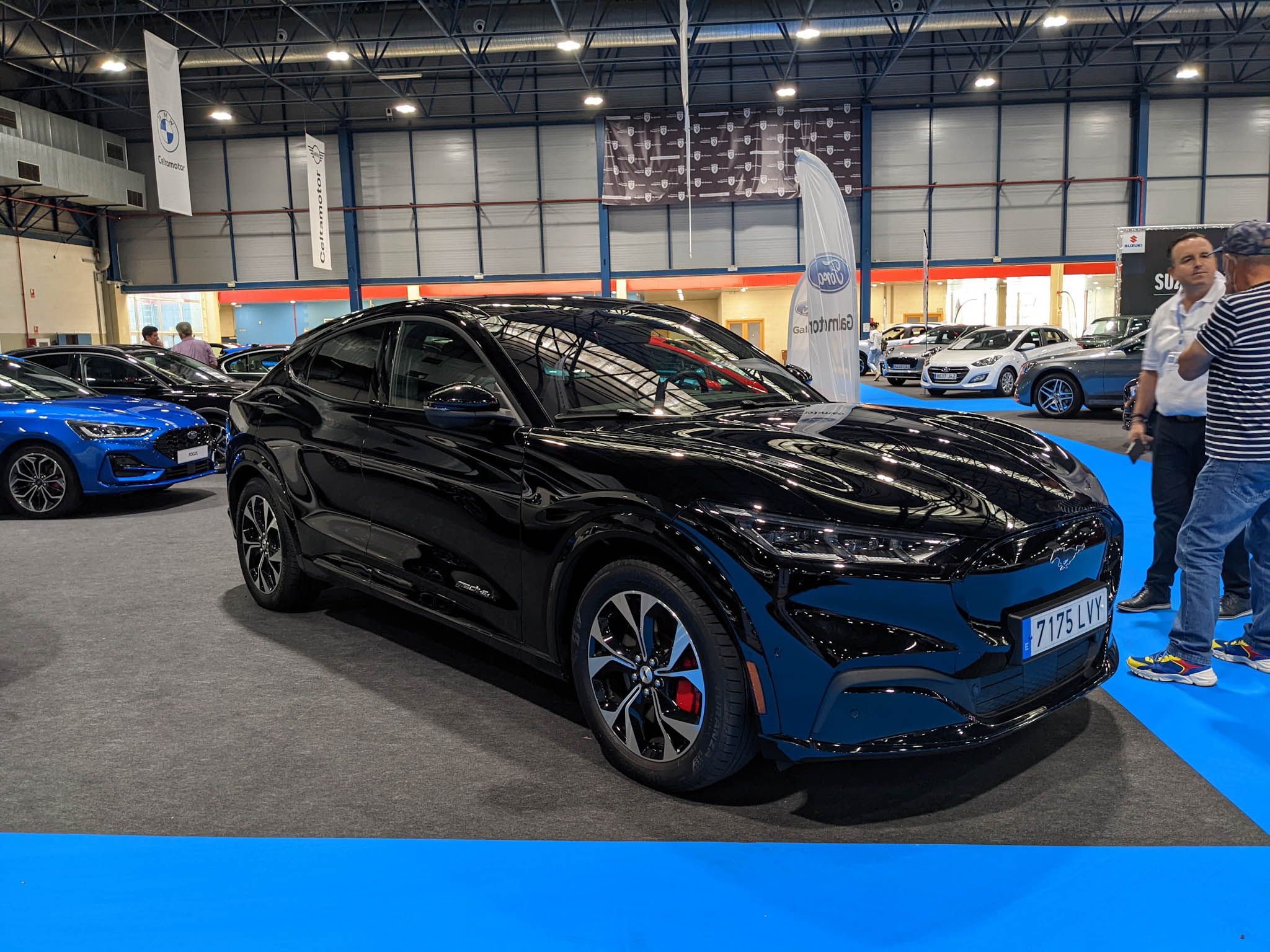
5. **Ford Mustang Mach-E**When Ford decided to slap the iconic Mustang badge on an electric SUV, it stirred up quite a bit of chatter, and not all of it positive. As one expert humorously pointed out, “As soon as you say electric Mustang, you are going to hear over and over this is not a Mustang at all, and hear about the Mustangs they used to and still own.” Beyond the identity crisis, the Ford Mustang Mach-E has been a vehicle of both promise and significant problems, revealing that Ford is still very much “in the learning curve” when it comes to electric vehicles.
One of the most common complaints revolves around the vehicle’s comfort and ride quality. The seating configurations contributed to an “uncomfortable ride,” particularly noticeable due to its “ride quality on uneven roads.” This, combined with an “awkward cabin,” made for a less-than-premium experience, especially for a vehicle trying to live up to a performance legacy, even if it’s an electric one.
However, the comfort issues pale in comparison to a far more critical flaw: battery failures. Ford Mustang Mach-E owners have reported terrifying “issues with the vehicle suddenly stopping in the middle of the road due to battery failures, even while it still had a substantial charge.” This severe problem led to Ford recalling “just south of 35,000 2021 and 2022 Ford Mustang Mach-E EVs to fix a battery issue that can cause the EV to lose power without warning.” The recall was prompted by over 100 reports of drivers experiencing this sudden power loss.
These critical battery failures are a major reason why many owners expressed they would “avoid buying the vehicle again,” highlighting a profound lack of confidence in its reliability. Compounding this, the car “did have a battery overheating concern, and it may still not be addressed fully,” leaving a lingering question mark over its long-term safety and dependability. For a vehicle that carries such an esteemed nameplate, these serious mechanical issues are a stark reminder that legacy doesn’t always guarantee a smooth electric transition.
Car Model Information: 2020 Lexus RX 350 Base
Name: Ford Mustang Mach-E
Manufacturer: Ford Motor Company
Production: 2021–present
ModelYears: 2021–present
Assembly: Unbulleted list
Designer: Unbulleted list
Class: Compact crossover SUV
BodyStyle: coupe SUV
Layout: Unbulleted list
Platform: Ford Global Electrified 1 platform
Motor: Synchronous motor#Permanent-magnet
Wheelbase: Convert
Length: Convert
Width: Convert
Height: Convert
Weight: Convert
ElectricRange: Convert
Battery: 68–98 kWh
Charging: unbulleted list
Powerout: Convert
Sp: us
ModelCode: CX727
Categories: 2020s cars, All-wheel-drive vehicles, All Wikipedia articles written in American English, All articles needing additional references, Articles needing additional references from January 2023
Summary: The Ford Mustang Mach-E is a battery electric compact crossover SUV produced by Ford. Introduced on November 17, 2019, it went on sale in December 2020 as a 2021 model. The Mach-E is part of the Mustang series, with its name inspired by the Mach 1 variant of the first-generation Mustang. The car won the 2021 North American SUV of the Year Award.
Get more information about: Ford Mustang Mach-E
Buying a high-performing used car >>>
Brand: Ford Model: Mustang Mach-E
Price: $30,981 Mileage: 81,179 mi.
Read more about: Avoid These 18 Overrated Car Brands Due to Reliability & High Maintenance
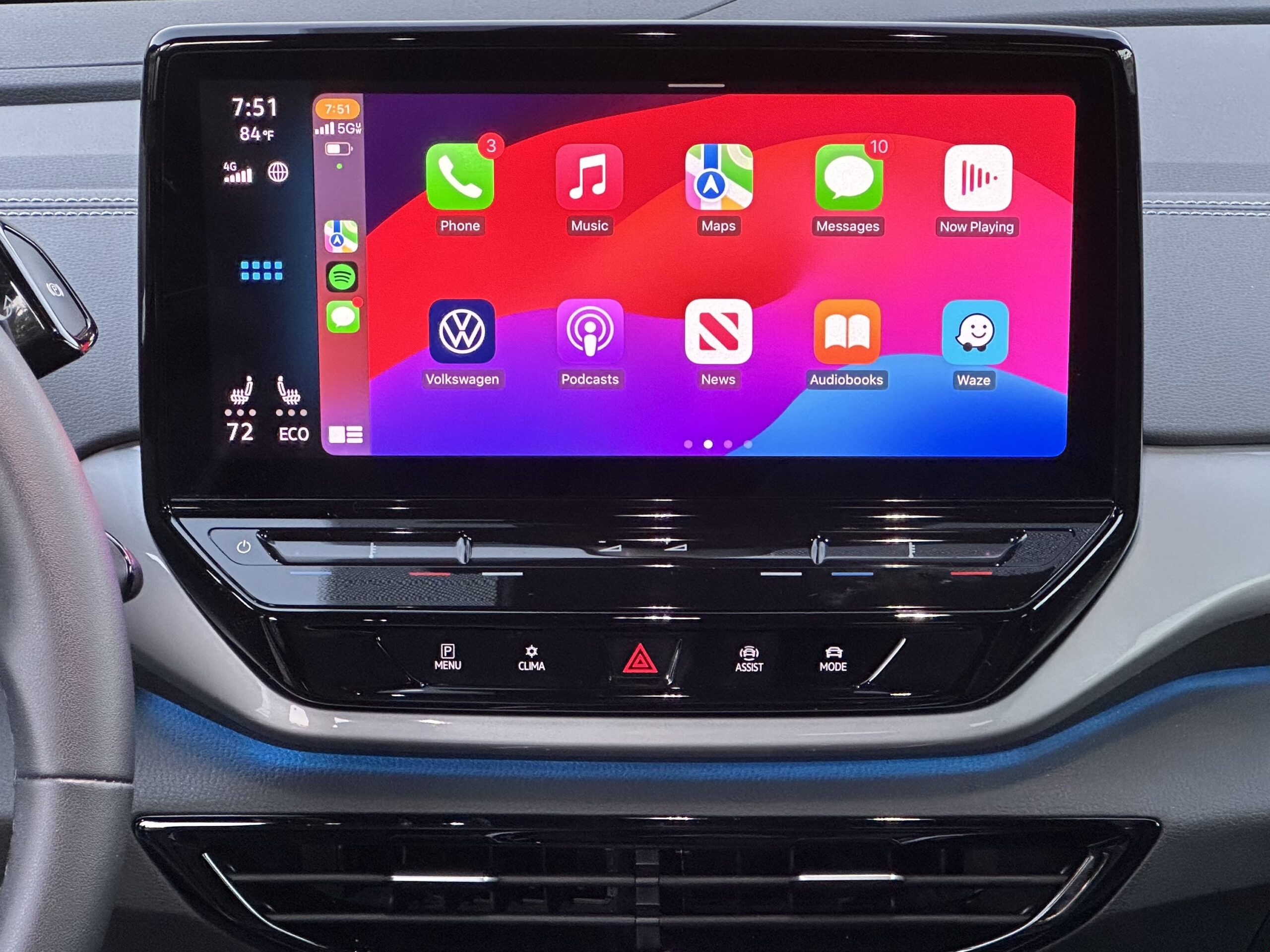
6. **Volkswagen ID.4**The Volkswagen ID.4 arrived on the scene with the hopes of being a mainstream electric contender, but its reception has been mixed, to say the least. While Volkswagen enjoys significant popularity abroad, the ID.4 hasn’t quite helped its record on this side of the sea, with reviewers and owners pointing out several key areas where it simply misses the mark. It seems that for many, the ID.4 fails to deliver a truly engaging or high-quality EV experience.
From the driver’s seat, critics observed that the Volkswagen ID.4 “does not offer as much of a fun driving experience as rival vehicles,” suggesting a certain blandness behind the wheel. The interior design also drew ire, with “low-quality plastics in its interior that make it feel cheap,” a significant letdown for a vehicle in its price bracket. Furthermore, the controls were found to be “challenging to operate,” complicating what should be a straightforward interaction with the vehicle’s functions.
But the real pain points for owners often emerged with battery performance, particularly in challenging conditions. One Volkswagen ID.4 owner “lamented that their’s had dismal battery life during the winter, which limited their use of the vehicle’s climate control system as well as its overall driving range.” This severely curtailed the vehicle’s utility during colder months, forcing drivers to make uncomfortable compromises between warmth and reaching their destination.
Adding to the frustration of limited winter range, the charging experience also left much to be desired, with the same owner complaining about “12-hour charging times.” This, combined with general feedback from past owners about “poor climate control, terrible battery, and a limited range,” creates a picture of an EV that, despite its potential, consistently underperforms in vital areas. The ID.4’s blend of subpar interior quality, a less-than-thrilling drive, and significant battery and charging woes make it a difficult recommendation for anyone seeking a truly satisfying electric vehicle.
Navigating the electric vehicle market can sometimes feel like trying to find your way through a maze blindfolded. While the promise of green driving and pocket-friendly savings is alluring, it’s clear that not every EV is a winner. We’ve already peeled back the curtain on six models that have left owners wishing for a time machine, and now, let’s keep that journey going. There are still more stories of disappointment and design missteps to uncover, ensuring you’re armed with all the intel before making your next big automotive decision.
Car Model Information: 2023 Volkswagen ID.4 Pro S
Name: Volkswagen ID.4/ID.5
Caption: 2020 Volkswagen ID.4 Pro
Manufacturer: Volkswagen
ModelCode: E21 (ID.4),E39 (ID.5)
Production: 2020–present
Assembly: ubl
Designer: Klaus Zyciora
Class: Compact crossover SUV
BodyStyle: SUV
Platform: Volkswagen Group MEB platform
Related: Volkswagen ID.3,Volkswagen ID.Buzz,Volkswagen ID.6,Škoda Enyaq,Audi Q4 e-tron,Cupra Tavascan,Ford Explorer EV,Ford Capri EV
Layout: Rear-motor, rear-wheel-drive
Motor: APP 550,Brushless DC electric motor
Battery: Lithium-ion battery
ElectricRange: 77-82 kWh, since 2024:,{{convert,263-291,mi,km,0,abbr=on
Charging: ubl
Wheelbase: 2765 mm
Abbr: on (ID.5)
Length: 4584 mm
Width: 1852 mm
Height: 1636 mm
Weight: convert
Powerout: Convert
ModelYears: 2021–present
Categories: All-wheel-drive vehicles, All Wikipedia articles in need of updating, All Wikipedia articles written in British English, Articles with short description, CS1 German-language sources (de)
Summary: The Volkswagen ID.4 and Volkswagen ID.5 are battery electric compact crossover SUVs produced by Volkswagen. Based on the MEB platform, the ID.4 is the second model of the Volkswagen ID. series. The production version of the ID.4 debuted in September 2020 as the first fully-electric crossover SUV under the Volkswagen brand, while the coupe-shaped variant of the ID.4 (akin to the Audi Q8 Sportback e-tron) is marketed as the Volkswagen ID.5 and was presented in November 2021.
The ID.4 is positioned by Volkswagen as a high-volume, mass-market electric vehicle — a car for “the millions, not the millionaires,” as the company claimed in its advertising. It was delivered to European customers from late 2020, and the first quarter of 2021 for the North American market.
The ID.4 was elected World Car of the Year 2021 over runner-ups Honda e and Toyota Yaris.
The vehicle was updated for model year 2024 to include a more powerful and efficient APP 550 electric motor with increased range, as well as heavily revised software and infotainment hardware.
Get more information about: Volkswagen ID.4
Buying a high-performing used car >>>
Brand: Volkswagen Model: ID.4
Price: $25,888 Mileage: 12,158 mi.
Read more about: Unlock the Vault: 15 Insider Secrets Car Journalists Swear By to Bag the Absolute Best New Car Deals from Dealers This October
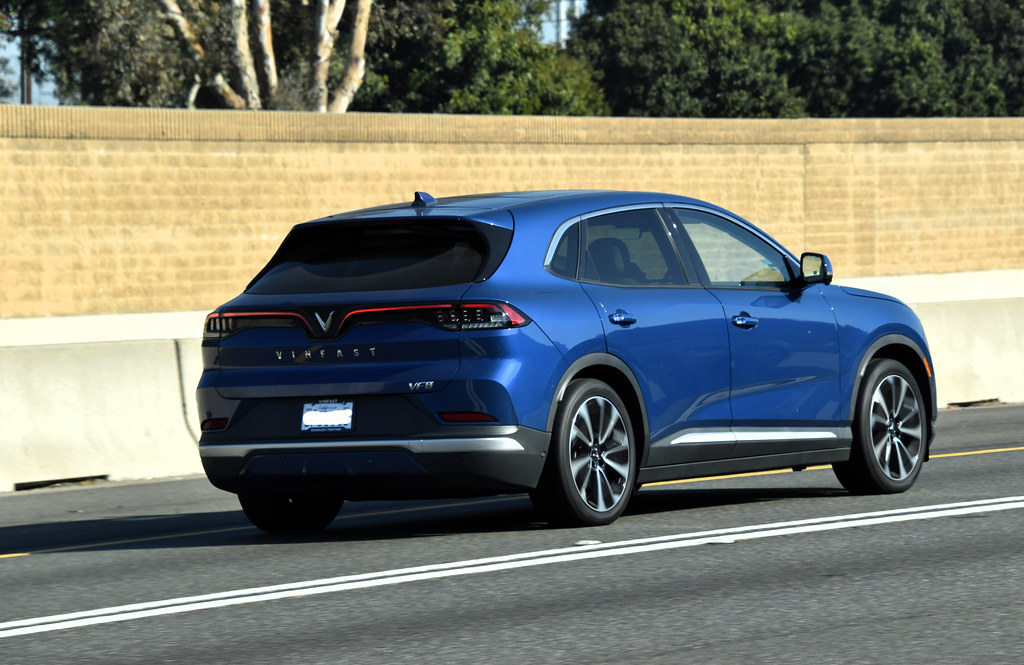
7. **VinFast VF 8**For those consumers eagerly eyeing new entrants in the electric vehicle space, the VinFast VF 8 might catch your attention with its fresh face. However, a closer look at the experiences of both professional reviewers and early adopters suggests that this particular EV might be one to approach with a healthy dose of caution, especially if you’re looking for a vehicle that’s robust and reliable from day one.
Reviewers, after spending time with the VinFast VF 8, have pointed out some fundamental drawbacks. Key among these criticisms are its “lackluster build quality” and an “unimpressive driving range.” These aren’t minor quibbles; for an electric vehicle, its foundational integrity and ability to travel a decent distance on a single charge are absolutely paramount. Falling short on these fronts can quickly turn the dream of EV ownership into a daily grind.
Beyond the initial professional assessments, VF 8 drivers have surfaced a range of concerning issues that hit right at the heart of daily usability and safety. Complaints have included significant problems with the vehicle’s air conditioning system, a crucial feature for comfort in varying climates. Even more troubling, some owners have experienced malfunctions with essential safety features, which is a serious red flag for any modern vehicle.
Perhaps most alarming are reports that the car would “suddenly stop driving” without warning, alongside a host of other “reliability issues.” Such critical failures are not only inconvenient but can also pose significant safety risks, making the VinFast VF 8 a challenging proposition for anyone hoping for a sturdy and dependable electric daily driver.
Car Model Information: 2020 Lexus RX 350 Base
Name: VinFast VF 8
Caption: VF 8 2025 in Stuttgart-Vaihingen
Manufacturer: VinFast
Production: 2022–present
ModelYears: 2023–present
Assembly: ubl
Designer: Pininfarina
Class: Mid-size crossover SUV
BodyStyle: Sport utility vehicle
Layout: ubl
Motor: Permanent magnet motor
Powerout: ubl
Wheelbase: 2950 mm
Abbr: on
Length: 4750 mm
Width: 1900 mm
Height: 1660 mm
Predecessor: VinFast LUX SA2.0
Sp: us
Battery: val,Samsung SDI
Categories: All-wheel-drive vehicles, All Wikipedia articles in need of updating, All Wikipedia articles written in British English, Articles with short description, Battery electric vehicles
Summary: The VinFast VF 8 is a battery electric mid-size crossover SUV (D-segment) manufactured and marketed by VinFast of Vingroup from 2022. The model made its debut in the second half of January 2022, as one of the product to support the automakers planned expansion to global markets.
Get more information about: VinFast VF 8
Buying a high-performing used car >>>
Brand: VinFast Model: VF 8
Price: $30,981 Mileage: 81,179 mi.
Read more about: Steer Clear: 15 Cars You Absolutely Should Not Buy in 2025, According to Automotive Experts
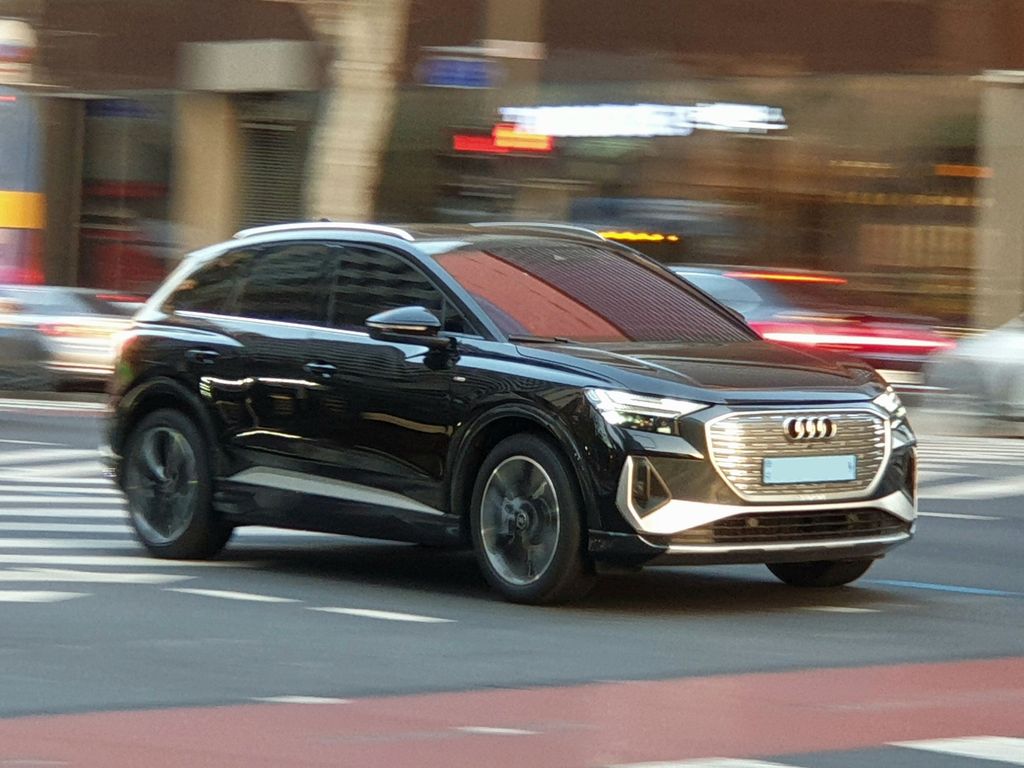
8. **Audi Q4 e-tron**Audi is a brand synonymous with luxury, performance, and cutting-edge German engineering, so when a model like the Q4 e-tron enters the electric arena, expectations are naturally sky-high. Unfortunately, for some buyers, the Audi Q4 e-tron has stumbled where it should have shined, failing to deliver the premium experience that the badge typically promises and falling short of its formidable competition.
One of the areas where the Q4 e-tron has faced criticism from reviewers is its practicality, specifically regarding “inferior cargo space” compared to its direct competitors. This can be a deal-breaker for families or anyone needing ample storage. Additionally, some “older trims have lackadaisical acceleration” and a “limited driving range,” which means a less thrilling and more restrictive experience, especially when compared to the zippy performance often expected from an EV.
The disappointment doesn’t stop at performance and space; owners have reported significant headaches with the vehicle’s technology and comfort systems. Complaints detail instances where “the vehicle’s multimedia systems and air conditioning stopped working soon after they purchased the vehicle.” Imagine investing in a premium EV only for core functionalities to fail almost immediately.
Adding to the list of concerns, one owner even “cited safety issues due to the car’s acceleration problems.” This blends performance shortcomings with critical safety implications, reinforcing the idea that this Audi, despite its esteemed lineage, occasionally falls short on the fundamentals that make an electric vehicle a truly satisfying and secure investment.
Car Model Information: 2020 Lexus RX 350 Base
Name: Audi Q4 e-tron
Wheelbase: 2764 mm
Abbr: on
Layout: Rear-engine, rear-wheel drive layout
Class: Compact executive car,crossover SUV,D-segment
ModelYears: 2022–present
Assembly: Zwickau
Designer: Amar Vaya (exterior),Chan Park (interior)
Weight: convert
Height: 1632 mm
Width: 1865 mm
Length: 4588 mm
Charging: 175 kW (82kWh)
ElectricRange: Worldwide Harmonised Light Vehicles Test Procedure
Battery: Lithium-ion battery
Motor: APP 550,permanent magnet synchronous motor
Platform: Volkswagen Group MEB platform
BodyStyle: SUV
Production: March 2021 – present
Manufacturer: Audi
Related: ubl
ModelCode: F4
Categories: All-wheel-drive vehicles, All Wikipedia articles written in British English, Articles with short description, Audi vehicles, CS1 German-language sources (de)
Summary: The Audi Q4 e-tron is a battery electric compact luxury crossover SUV produced by Audi. It is based on Volkswagen Group’s electric MEB platform and is the fourth fully-electric model in the Audi e-tron series after the Audi Q8 e-tron (formerly Audi e-tron), e-tron GT and Q2L e-tron. Production began in March 2021, with the production version being unveiled in April 2021.
The Q4 e-tron is also notable for being the first Audi to be produced in Zwickau since the pre-war era of the company; the town being the original founding location of both the historic Audi company and its predecessor – Horch – before they were merged into Auto Union in 1932.
Get more information about: Audi Q4 e-tron
Buying a high-performing used car >>>
Brand: Audi Model: Q4 e-tron
Price: $30,981 Mileage: 81,179 mi.
Read more about: I’m an Insurance Agent: These 14 Vehicles Carry the Highest Risk Premiums of 2025
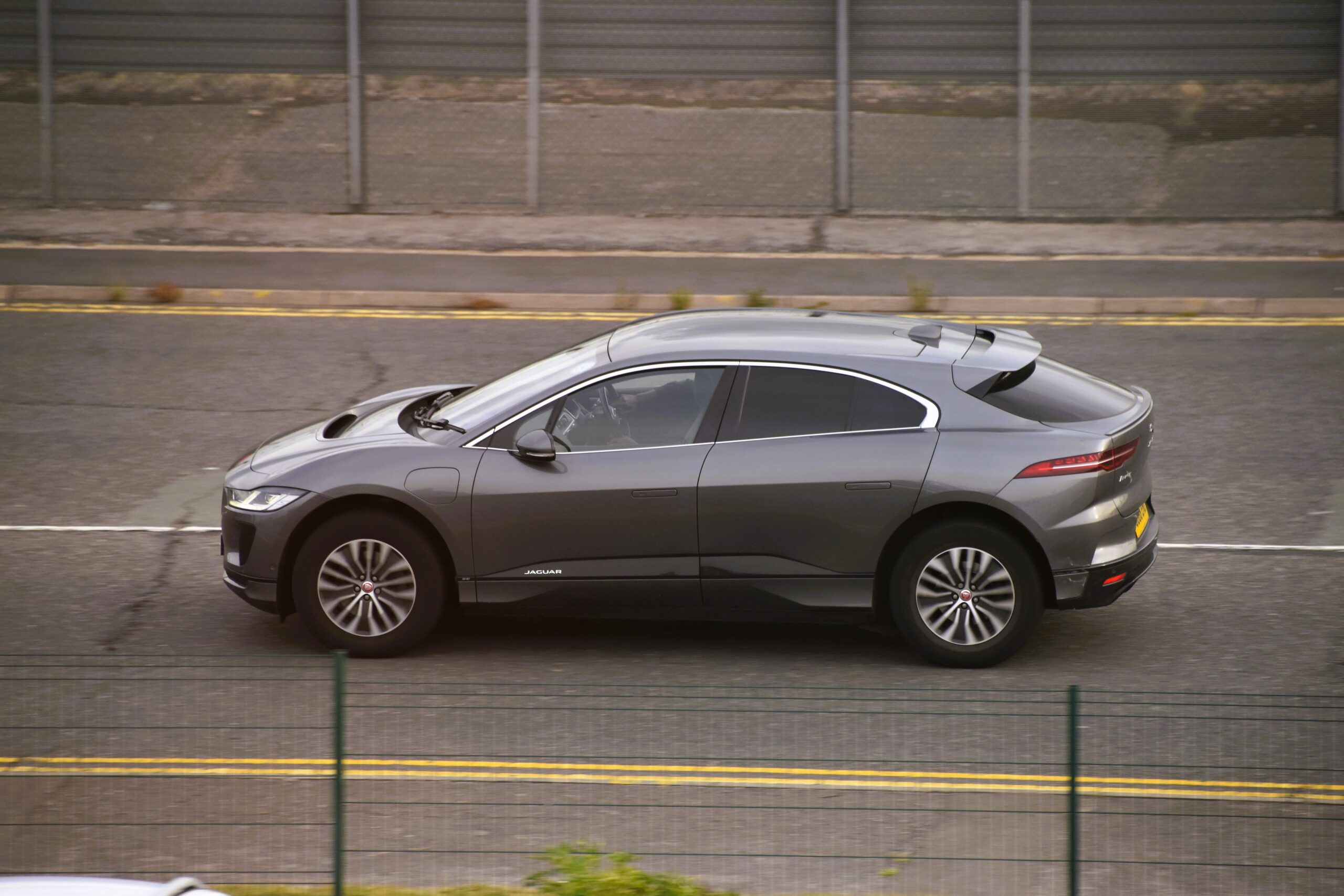
9. **Jaguar I-PACE**The Jaguar I-PACE, with its sleek design and promise of electric performance, made quite a splash when it first arrived. It’s an “all-power vehicle with stunning looks and regenerative braking,” creating a sense of sophisticated innovation. However, beneath that stylish exterior, a lack of ongoing attention has slowly but surely eroded its competitive edge, leaving many drivers feeling that this once-pioneering EV is now decidedly behind the curve.
Reviewers have pointed to a “weak climate control system” and a “modest driving range at best, even on a full charge.” In a world where luxury EVs are constantly pushing boundaries on comfort and endurance, these are significant drawbacks. For a premium brand, a less-than-optimal climate control system can be particularly frustrating, impacting the overall cabin experience.
The issues become even more pronounced when considering owner experiences. One I-PACE owner, for instance, “complained that this electric SUV had numerous electrical issues,” leading them to express regret and state they “would not purchase or lease it again if they could redo their decision.” Such firsthand accounts highlight a deeper underlying reliability concern that can undermine the entire ownership proposition.
Further complicating matters is Jaguar’s strategic shift. Experts note the “Jaguar’s decision to neglect it and avoid substantial updates over the years has made it noncompetitive,” with the 2024 model being the last in its line. As the company moves towards a more exclusive, high-end EV market, concerns arise that this “radical transformation will likely impact the support for the I-Pace and other existing models,” leaving current owners in a potentially vulnerable position regarding future service and parts availability.
Car Model Information: 2022 Jaguar I-PACE HSE EV400 AWD Automatic
Name: Jaguar I-Pace
Manufacturer: Jaguar Land Rover
Production: 2018–2024
Assembly: Magna Steyr
Designer: Ian Callum
Class: Compact crossover SUV#Luxury vehicles
BodyStyle: SUV
Layout: all-wheel-drive
Platform: Jaguar Land Rover car platforms#D7e
Motor: Permanent magnet synchronous motor
Abbr: on
Transmission: 1-speed direct-drive reduction
Battery: kW·h,Lithium-ion battery
ElectricRange: United States Environmental Protection Agency
Charging: 11kW AC (7.4kW “1-phase/32A only” AC 2018–2020),100 kW DC
Wheelbase: 2990 mm
Length: 4682 mm
Width: ubl
Height: 1565 mm
Weight: 2133 kg
Sp: uk
Categories: 2020s cars, All-wheel-drive vehicles, All Wikipedia articles written in British English, All accuracy disputes, All articles lacking reliable references
Summary: The Jaguar I-Pace (stylised as I-PACE) is a battery-electric crossover SUV produced by Jaguar Land Rover (JLR) under their Jaguar marque. The I-Pace was announced in March 2018, European deliveries began in June 2018 and North American deliveries started in October 2018. Amid slowing sales and a change in corporate vision, Jaguar has announced that the I-Pace will be discontinued by 2025.
Get more information about: Jaguar I-Pace
Buying a high-performing used car >>>
Brand: Jaguar Model: I-PACE
Price: $32,999 Mileage: 44,699 mi.
Read more about: Avoid These Electric Cars Known for High Battery Replacement Costs
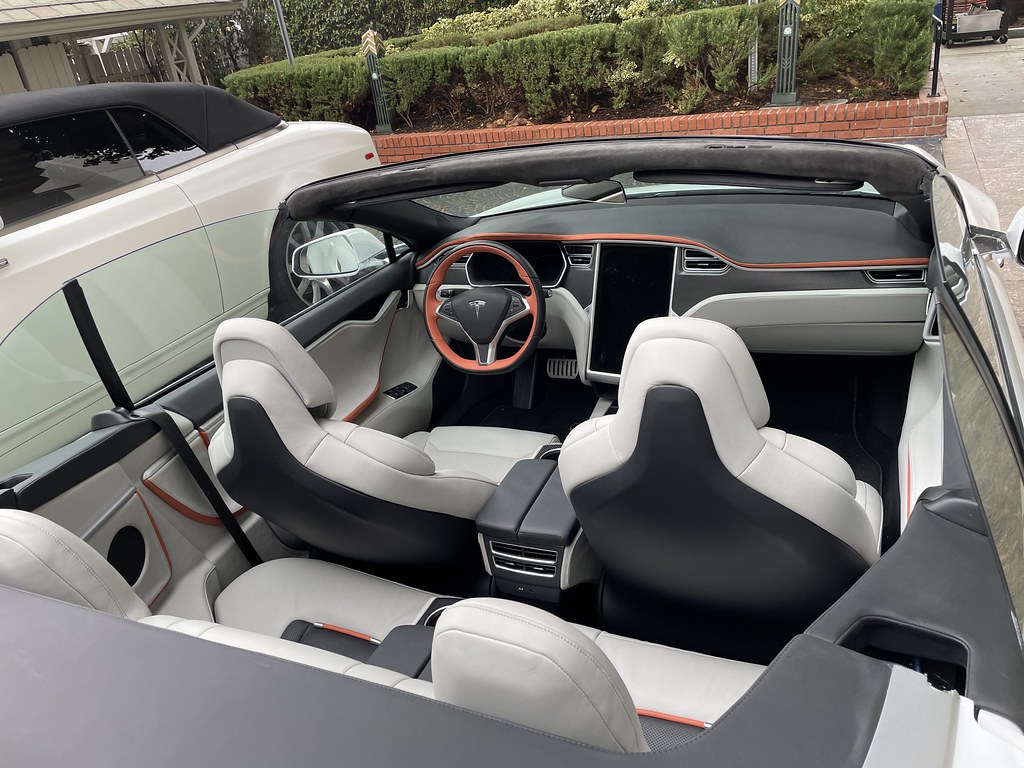
10. **Tesla Model X**Ah, the Tesla Model X. It’s instantly recognizable with its signature “impractical upward-swinging rear doors” — also known as falcon wing doors — which, while visually striking, have often proven to be a source of frustration for owners. Tesla, a name that’s become synonymous with EVs, has certainly had its share of triumphs, but the Model X, particularly older iterations, highlights where ambition sometimes clashes with practical execution.
Beyond the unique doors, reviewers have taken issue with other design choices, such as the “glass roof and windshield that practically turns the cabin into an oven,” especially in sunnier climates, making for an uncomfortably warm interior. And for those deeply integrated into their smartphone ecosystems, the Model X falls short by not offering compatibility with either Android Auto or Apple CarPlay, a feature many expect as standard in a premium vehicle.
The real heart of the matter for many owners, however, has been reliability. “Some Tesla Model X owners have regretted purchasing this vehicle because of reliability concerns,” with one going as far as to call it a “money pit.” These issues extend to concerns about the “winged doors working right and sealing properly,” which can be a constant headache. Add to that the car’s immense power, which can lead to “the driver finds themselves running out of battery power sooner than expected” due to enthusiastic use.
Early model years, like the 2016 Tesla Model X, earned a reputation as a “masterpiece of misaligned doors, shoddy panel gaps, and so-so interior fit and finish.” Owners also pointed out problems with the “vehicle’s suspension components.” These build quality complaints, combined with the power drainage and door issues, paint a picture of a vehicle that, while innovative, has struggled with the fundamental aspects of consistent performance and durability.
Car Model Information: 2020 Lexus RX 350 Base
Name: Tesla Model X
Manufacturer: Tesla, Inc.
Production: 2015–present
Assembly: unbulleted list
Designer: Franz von Holzhausen
Class: Crossover (automobile)
BodyStyle: 5-door SUV
Layout: unbulleted list
Doors: unbulleted list
Related: Tesla Model S
Motor: unbulleted list
Title: Discontinued
Transmission: unbulleted list
Battery: unbulleted list
ElectricRange: FTP-75
Wheelbase: cvt
Length: cvt
Width: cvt
Height: cvt
Weight: unbulleted list
Sp: us
Categories: 2020s cars, All Wikipedia articles in need of updating, All Wikipedia articles written in American English, All articles containing potentially dated statements, All articles lacking reliable references
Summary: The Tesla Model X is a battery electric mid-size luxury crossover SUV built by Tesla, Inc. since 2015. Developed from the full-sized sedan platform of the Tesla Model S, the vehicle uses distinctive falcon wing doors for rear passenger access.
The Model X has an EPA size class as an SUV, and shares around 30 percent of its content with the Model S, half of the originally planned 60 percent, and weighs about 10 percent more. Both the Model X and Model S are produced at the Tesla Factory in Fremont, California. The prototype was unveiled at Tesla’s design studios in Hawthorne, California, on February 9, 2012. First deliveries of the Model X began in September 2015. After one full year on the market, in 2016, the Model X ranked seventh among the world’s best-selling plug-in cars. A refresh of the Tesla Model X was introduced in 2021, offering a new “Plaid” performance model, along with a revised interior, powertrain, and suspension.Another update of the Model X was introduced in June 2025 with a new front bumper camera, new wheel designs, increased third-row space, dynamic ambient lighting, and adaptive headlights. The updates are similar to the Model S, which was updated at the same time.
As of July 2025, the Model X is available as a Long-Range version with an estimated EPA range of 352 miles (566 km) and a high performance “Plaid” version with an estimated EPA range of 335 miles (539 km).
Get more information about: Tesla Model X
Buying a high-performing used car >>>
Brand: Tesla Model: Model X
Price: $30,981 Mileage: 81,179 mi.
Read more about: Beyond the Bling: 9 Frugal Habits Millionaires Embrace to Build and Sustain True Wealth
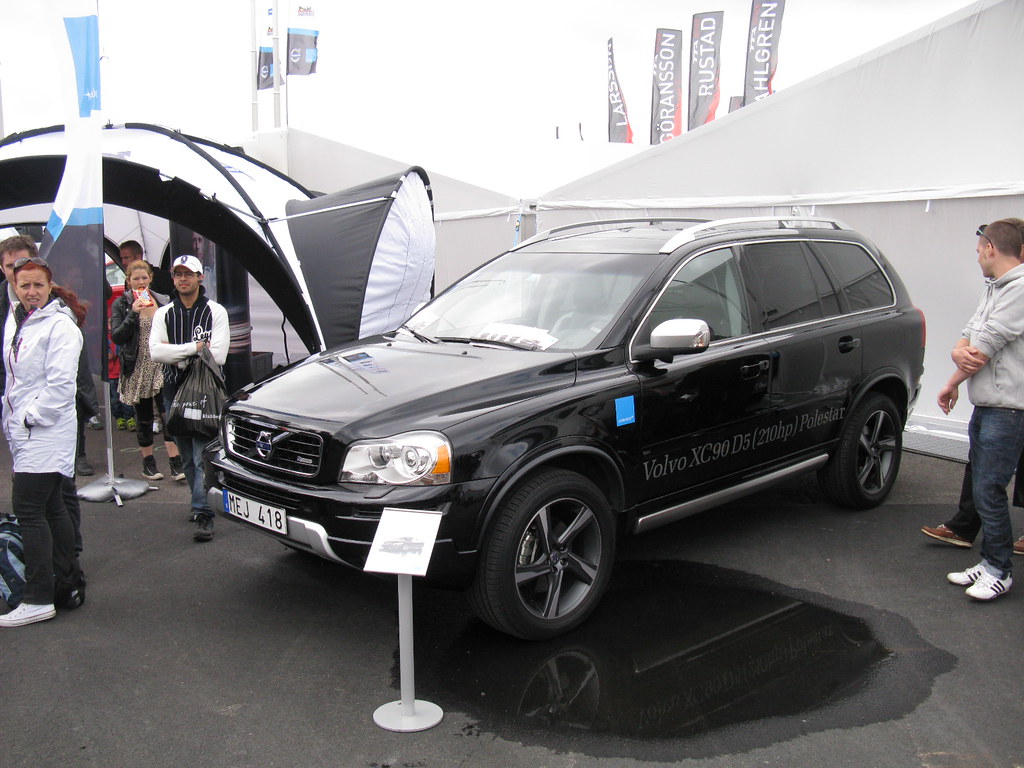
11. **Polestar 2**Polestar has emerged as a sleek, design-forward contender in the electric vehicle space, often appealing to those looking for something a bit different from the mainstream. However, even with its contemporary aesthetics, the Polestar 2 has unfortunately found itself making its way onto lists of cars that some owners wish they had avoided, proving that a sharp exterior isn’t the only metric for success in the competitive EV market.
The 2024 Polestar 2, in particular, has garnered attention for the wrong reasons. A significant point of contention has been its interior, with reports of “cramped seating.” This can be a major discomfort on longer journeys or for larger occupants, undermining the appeal of a supposedly modern and comfortable vehicle. Driving dynamics also drew criticism, with mentions of “stiff handling” that can make for a less enjoyable or refined ride compared to some rivals.
Perhaps the most critical issue for any car, electric or otherwise, is reliability, and here the Polestar 2 faces an uphill battle. It’s been noted for “lower-than-average reliability,” a concern that can quickly turn initial enthusiasm into long-term frustration. Recurring issues or unexpected breakdowns can be costly and inconvenient, impacting confidence in the vehicle as a dependable daily driver.
Collectively, these issues—from the snug interior and firm ride to the more serious reliability concerns—position the Polestar 2 as an EV that, despite its attractive design and modern appeal, hasn’t quite hit the mark for everyone. For those seeking an effortless and dependable electric vehicle, these reported shortcomings make it a model worth carefully considering before committing.
Car Model Information: 2022 Polestar 2 Long Range Dual Motor
Name: Polestar 2
Manufacturer: Polestar
Production: 2020–present
Designer: Thomas Ingenlath
Assembly: Luqiao
Class: Luxury vehicle#Premium compact
BodyStyle: liftback
Layout: Front-motor, front-wheel-drive
Platform: Compact Modular Architecture
Related: Unbulleted list
Motor: Unbulleted list
Abbr: on
Sigfig: cite web
Battery: Unbulleted list
ElectricRange: Unbulleted list
Charging: Unbulleted list
Length: 4606 mm
Wheelbase: 2735 mm
Width: 1859 mm
Height: 1482 mm
Weight: cvt
Sp: us
Categories: 2020s cars, All-wheel-drive vehicles, All Wikipedia articles written in British English, All articles with unsourced statements, Articles with short description
Summary: The Polestar 2 is a battery electric 5-door liftback marketed by Polestar, an affiliate of Geely Holding and Volvo Cars. Based on the CMA platform, production began in March 2020 at the Luqiao CMA Super Factory in Luqiao, Zhejiang, China.
Get more information about: Polestar 2
Buying a high-performing used car >>>
Brand: Polestar Model: 2
Price: $28,994 Mileage: 13,517 mi.
Read more about: For the Family Man: The 10 Safest Crossover Bargains of 2025 You Can’t Afford to Miss
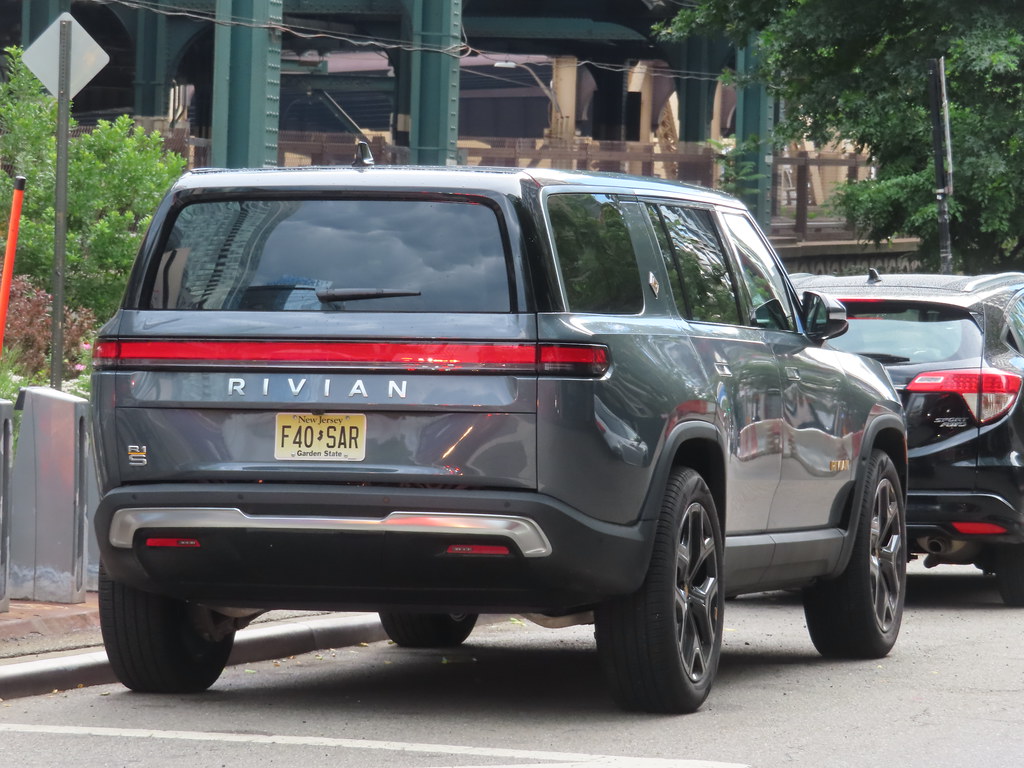
12. **Rivian R1S**Rivian burst onto the scene with a refreshing take on adventure-ready electric vehicles, promising rugged capability wrapped in a high-tech package. The R1S, a three-row SUV, certainly offers plenty of space for families and gear, appealing to those who want to blend eco-conscious driving with utility. Yet, even with its innovative spirit, the R1S carries a few substantial caveats that might give potential buyers pause, particularly when it comes to real-world performance and maintenance costs.
One area where the R1S has drawn criticism is its driving dynamics, specifically its “awkward performance at high speeds” and a “stiff suspension.” For an SUV designed to handle both city streets and more adventurous terrains, a less-than-smooth high-speed experience and a jarring ride can detract from the overall driving pleasure. And when these characteristics are coupled with the fact that “all of it is so expensive too,” the value proposition begins to look less appealing.
A particularly striking warning for Rivian R1S owners, or those considering one, pertains to potential repair costs. One expert cautioned that “if you ever scratch it or bend a body panel, especially on the bed, get ready to cry.” They’ve “seen plenty of fender benders where this vehicle was in excess of $20K to repair cosmetic parts only.” This highlights a significant financial risk that isn’t typically associated with standard vehicle ownership and could lead to major buyer’s remorse if an unfortunate incident occurs.
So, while the Rivian R1S stands out with its bold design and impressive capabilities, the combination of sometimes-awkward performance, a stiff ride, and the eye-watering cost of cosmetic repairs makes it a vehicle where buyers need to weigh the excitement of innovation against the practicalities and potential financial headaches of long-term ownership. It’s a reminder that even trailblazing EVs can come with their own set of challenges that might leave some drivers wishing for a different path.
So, there you have it – another look into the challenging side of EV ownership. The promise of electric vehicles is undeniably exciting, offering significant savings at the pump and a greener footprint. However, as these stories reveal, the journey into electric mobility isn’t always smooth sailing. From persistent reliability issues to unexpected design flaws and costly repairs, these 12 models serve as crucial reminders that a thorough investigation is paramount before plugging into a new purchase. Do your homework, consider the real-world experiences, and remember that sometimes, saving money at the gas station isn’t the only factor to consider when driving home with your next vehicle. Armed with this knowledge, you’re better equipped to avoid the sorrow and find the EV joy you truly deserve.”
Car Model Information: 2023 Rivian R1S Adventure
Name: Rivian R1S
Manufacturer: Rivian
Production: 2022–present
ModelYears: 2022–present
Assembly: Rivian Automotive,LLC
Designer: Paul Hoste (2014)
BodyStyle: SUV
Related: Rivian R1T
Drivetrain: Individual wheel drive,Four-wheel drive
Powerout: cvt
Doors: 4 doors + 1 in rear
Transmission: Single-speed
Battery: Flashlight
ElectricRange: cvt
Wheelbase: cvt
Length: cvt
Width: cvt
Height: cvt
Weight: cvt
Categories: Articles with short description, Commons category link from Wikidata, Full-size sport utility vehicles, Production electric cars, Rivian SUVs
Summary: The Rivian R1S is an all-electric seven passenger, mid-size, off-road SUV manufactured by Rivian. Customer deliveries started in 2022, after 10 years under development. Depending on the configuration, it has either two, three, or four electric motors.
Get more information about: Rivian R1S
Buying a high-performing used car >>>
Brand: Rivian Model: R1S
Price: $58,549 Mileage: 54,610 mi.
Read more about: The 14 Luxury SUVs Hollywood Moms Are Obsessed With for Ultimate Safety (and Why You Should Be Too!)
, “_words_section2”: “1940


